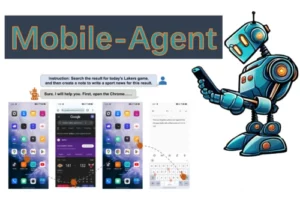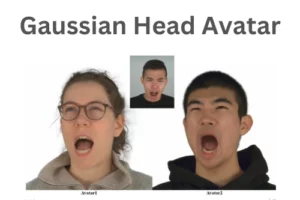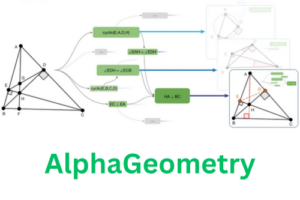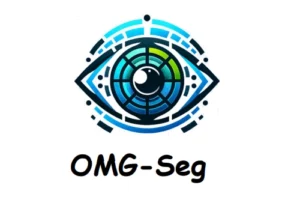Explore the potential of artificial intelligence in on-board satellites for the fastest data processing to achieve real-time decision-making and collaboration within the constellation. The purpose of this research is to explore the practical implementation of AI in on-board satellites. This research uses a lightweight model known as RaVAEn model in on-board satellites , which reduces data transmission requirements on onboard satellites. Its primary goal is to do fast data analysis on on-board satellites.
This research was done by many researchers known as Vít Růžička, Gonzalo Mateo-García, Chris Bridges, Chris Brunskill, Cormac Purcell, Nicolas Longépé, Andrew Markham and it was published in the University of Oxford, Trillium Technologies, University of Valencia, University of Surrey, University of New South Wales, and D-Orbit European Space Agency.

The researcher aims to implement the multi-task model on a satellite that performs onboard training on a satellite using RaVAEn Model. The RaVAEn model in on-board satellites is addressing constraints and limitations faced by the previous model such as processing and extracting information from the on-board satellite itself.
Previous Research Influence
The previous research defines the role of AI on on-board satellites. Previous research set the foundation of present research as a researchers evaluated the VAE model to perform unsupervised change detection. Past study reports the efficient data processing and practical application of the VAE model in space. This approach compares images in the latent space to identify changes in the space. The previous research focuses on disaster scenarios and defines the effectiveness of the VAE model. The previous work in the field of (EO) satellites raises the importance of data processing on on-board satellites. Some application is used to identify and target changes in the images and compress images for the fastest transmission on satellites.
Advance Impact Of RaVAEn Model In On-Board Satellites
The present research applied artificial intelligence on on-board satellites for efficient data processing. This way satellites can handle more amount of information without sending back to earth. RaVAEn model in on-board satellites compresses large images into smaller files on onboard retaliate because this helps the satellite to gain efficiency and effectiveness in satellite performance This research seems to show how AI can enhance the decision-making ability of the on-board satellite itself. This way satellites can take decisions by themselves rather than taking instructions from the earth.

With the help of AI, satellites are becoming smarter and more independent. The researcher was checking the limit of satellites to handle and process data in less time. They were also checking-out different parts of the satellite on which information process fastest so that AI can work more efficiently. Not only that researcher also focuses on training on-board satellite. This research shows that on-board satellite new things by themselves with the help of few examples.
Availability
This research paper is presented on arxiv.org and paperswithcode.com. More source code is present on the GitHub repo. Soon research will publish the tits data set. This research paper and its code is available to users. The researcher has also published VAE variant auto-encoder model known as the RavAEn model in on-board satellites on the GitHub repo.
Impact On Modern Technology
RaVAEn model in on-board satellites has a huge impact on the world with its advance features researchers and scientists can gather more information about planets, outer space, and celestial. RaVAEn model in on-board satellites plays a vital role in disaster response and management. Its outstanding ability to perform real-time analysis helps to identify natural disasters can make quick decisions in times of disaster that can aid people’s lives. You can take look of below example.

It can minimize the impact of the disaster as pre-action will be taken to deal with those disasters. It will be utilized in communication and collaboration with satellite constellations this way states can also coordinate with each other. An autonomous way will help them to collaborate most effectively. This will help scientists to explore space with the help of AI. It will handle complex tasks on on-board satellites.
Technical Summary
The light-made model was implemented on D-Orbit’s ION SCV004 on-board satellite for training tasks and detecting changes. The lightweight RaVAEn model in on-board satellites creates a compressed representation of images known as latent vectors. These vectors collect important information about images that are used for different tasks.

This research paper has explored the AI on-board satellite for fast data processing in space missions It has two main objectives first it measures the inference time of the RaVAEn model encoder network on different devices available on the satellite including the Myriad vision processing unit (VPU) accelerator and the onboard CPU with PyTorch and OpenVino libraries. Secondly, it focuses on-board satellite training using the RaVAEn model in on-board satellites for cloud detection.
The efficiency of RaVAEn model in on-board satellites cover encoding time up time up to 0.110 seconds and for tiles covering 4.8×4.8 km² area. They compare its performance with different computing devices such as with Myriad VPU which offer fast encoding time.
Results
By implementing the RaVAEn model in on-board satellite swill allow the system to perform analysis in mean time. This ability improved satellite functionality by allowing it to make faster decision and enhancing system proficiency. RaVAEn model in on-board satellites will monitor the environment by tracking climate change, monitoring wildlife habits, studying deforestation, and checking the health of the ecosystem. This helps in monitoring disaster events such as landscapes, floods, fires, and fires. This approach identifies disasters in the early stages to save lives and minimize damage.

You can view Latest news stories
Similar Posts
-
Chinese Company DeepSeek Releases DeepSeek-Coder a LLM for Code Generation

-
Alibaba’s Mobile-Agent: A Smart Mobile Assistant

-
Grounded SAM: A Unified Model for Diverse Visual Tasks

-
Gaussian Head Avatar: High Quality Head Avatar Generator

-
Google DeepMind’s AlphaGeometry: Without Assistance Solving Olympiad Geometry Problems

-
OMG-Seg: A Unified Segmentation Model

